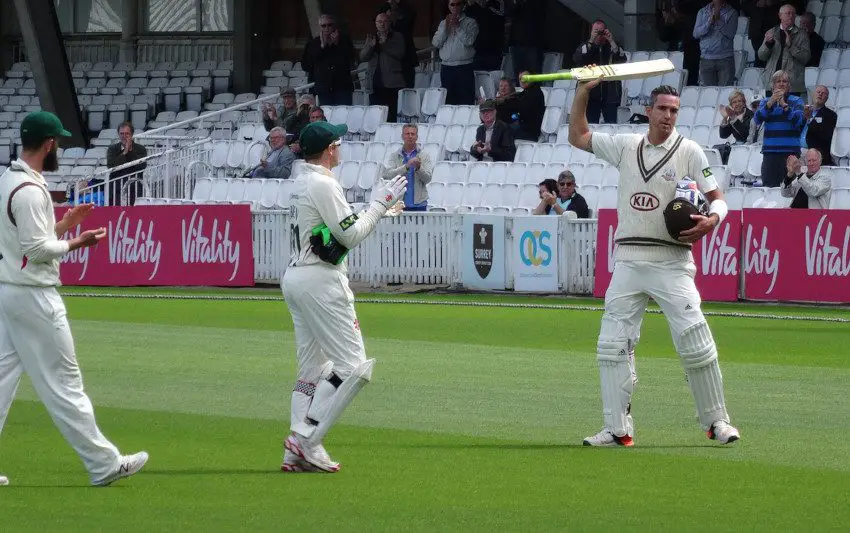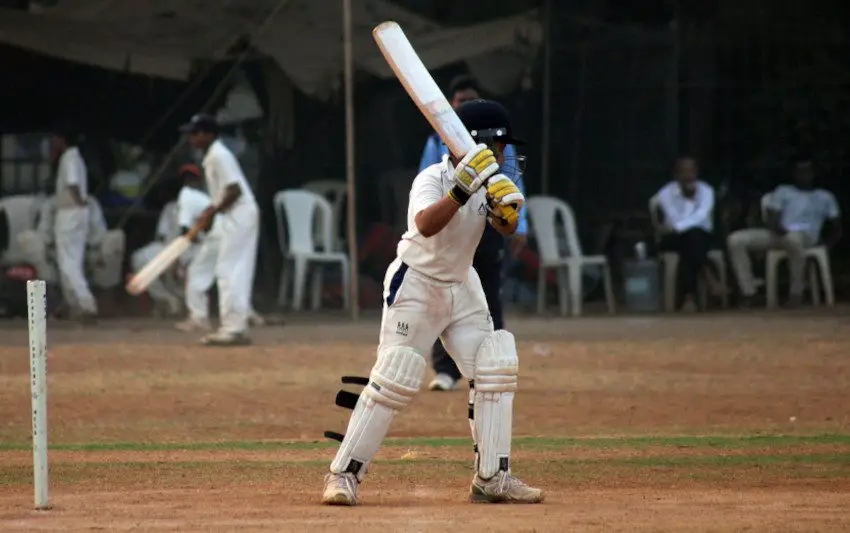Table of Contents
This might just be the hardest category of international fast bowlers to pick. The West Indies have given us a production line of brilliant pacemen since the 1960s, but I will have a go at naming the best of them.
Top 12 Greatest Pace Bowlers of West Indies
Malcolm Marshall
This list isn’t necessarily in order but few would argue with the theory that Malcolm Marshall should be at the very top. Unlike a number of his teammates, Marshall was not a tall man but that gave him a skiddy action where the ball travelled quickly off the pitch.
He could be hostile with short pitched deliveries but he was at his devastating best when the ball landed in the batter’s arc. Marshall claimed 376 wickets in just 81 test matches between 1978 and 1991.
Curtly Ambrose
Curtly Ambrose was one of those bowlers who could generate pace and bounce in any situation. Even if the pitch was worn and slow, Curtly was a real threat.
While not quite as tall as Joel Garner, Ambrose delivered the ball from a great height and that was another problem for batters. He played 98 tests and claimed 404 wickets which puts him second on the West Indies’ all-time list.
Ambrose’s best figures in an innings were 8/45 and he also claimed 225 wickets in 176 ODIs.

Joel Garner
The tallest of West Indian bowlers of his era, Joel Garner’s height earned him the nickname of Big Bird. His extended point of delivery caused huge problems for batters and he generated exaggerated bounce from most surfaces as a result.
Garner also had some serious pace and he achieved some impressive returns across an international career that lasted from 1977 to 1987. In just 58 test matches, he took 259 wickets and had best innings figures of 6/56.
Joel Garner was equally valuable in ODIs where he claimed a further 146 victims in 98 games.
Michael Holding
They called him Whispering Death because of his silent approach to the crease which was followed by the most hostile of bowling. Michael Holding made his test debut in 1975 and he made a lasting impression on the game during West Indies’ tour of England a year later.
On bouncy English pitches he made his name and would continue to do so over a long international career that finally came to a close in 1987. Holding claimed 391 international wickets and his best innings figures of 8/92 came in that 1976 series in England.
Courtney Walsh
A respected captain and a long-time servant of West Indies cricket, Courtney Walsh accepted the fast bowling baton that was passed down by the likes of Marshall, Holding, Roberts and Garner.
Walsh would finish a long career as the West Indies’ leading wicket taker across all formats. His 519 test match victims came in 132 games between 1984 and 2001 and included best innings figures of 7/37. Walsh’s 227 ODI wickets included a devastating spell of 5/1 against Sri Lanka. This remains a record of anyone taking five wickets in a One Day International.
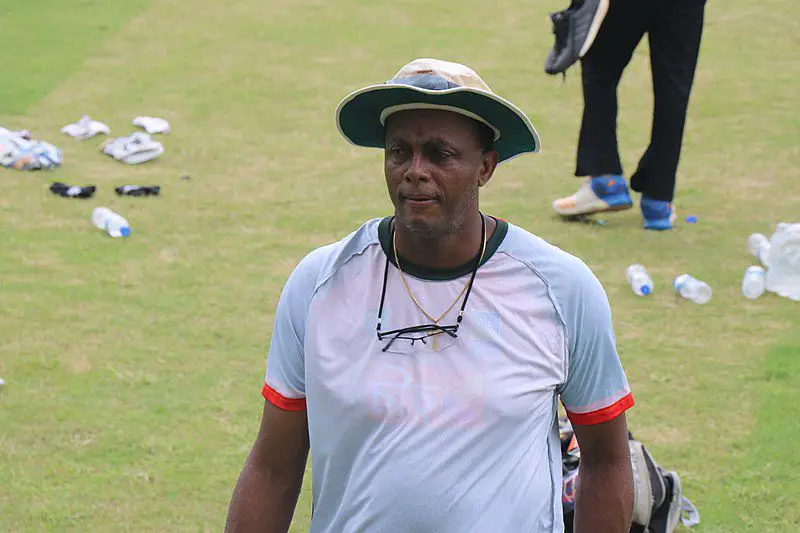
Andy Roberts
The leader of West Indies’ pace quartets in the 1970s, Anderson Montgomery Everton Roberts played in just 47 test matches between 1974 and 1983. He was also the quickest of all West Indian bowlers in many ways.
It took Roberts just two and a half years to reach 100 test wickets and that was a world record in terms of time. After losing some international opportunities to the Packer Revolution and World Series Cricket, he returned and, while his speed was down, he could still seam and swing the ball.
Andy Roberts took 202 wickets in those 47 tests with a best of 7/54. He also claimed 87 wickets in 56 One Day Internationals.
Manny Martindale
A less familiar name is that of Manny Martindale who played in just ten tests between 1933 and 1939. Like many players of his era, Martindale’s career was interrupted by the Second World War at a time when he was just starting to have an effect at the highest level.
He is regarded as one of the West Indies’ first great fast bowlers and he set a trend for others to follow. On his one tour of England in 1933, he produced the kind of hostile bowling that was seen in the Bodyline series a few months earlier.
Martindale excelled in tour games in that 1933 season although his test figures were more modest. In those ten international matches, he claimed 37 wickets with best figures of 5/22.
Charlie Griffith
One half of a fearsome fast bowling spearhead in the 1960s, Charlie Griffith’s test career spanned the entire decade from 1960 to 1969. It’s surprising, however, that he only played in 28 test matches in that time.
That may have been down to questions over his action, but Griffith’s natural pace was certainly effective when he did take to the field. In those 28 games, he took 94 wickets at an average of 28.54 and with best figures of 6/36.
Wesley Hall
Along with Charlie Griffith, Wes Hall shared the new ball for the West Indies to great effect. Hall was a more regular figure in the team, playing in 48 test matches between 1958 and 1969.
It’s said by some that he was similar to Michael Holding in his approach with a long and fluid run up that belied the serious pace that was to follow. Wes Hall was certainly effective at the highest level and he took 192 wickets in those 48 games.
His best figures in an innings were 7/69 and he claimed a wicket at an average of 26.38.
Learie Constantine
Later to become Lord Constantine due to his work outside of the game, he certainly made his mark on the world of cricket. Learie Constantine made his test debut in 1928 and can therefore genuinely lay a claim to being the West Indies’ first great fast bowler.
He was a big man with a high action and a smooth run up that could generate excellent pace. He was one of the few players outside of England or Australia who had the ability to trouble batters with their speed at that time.
Following his debut in 1928, Learie Constantine played in 18 tests before the Second World War brought about an abrupt pause to international cricket. He took 58 wickets with best innings figures of 5/75.
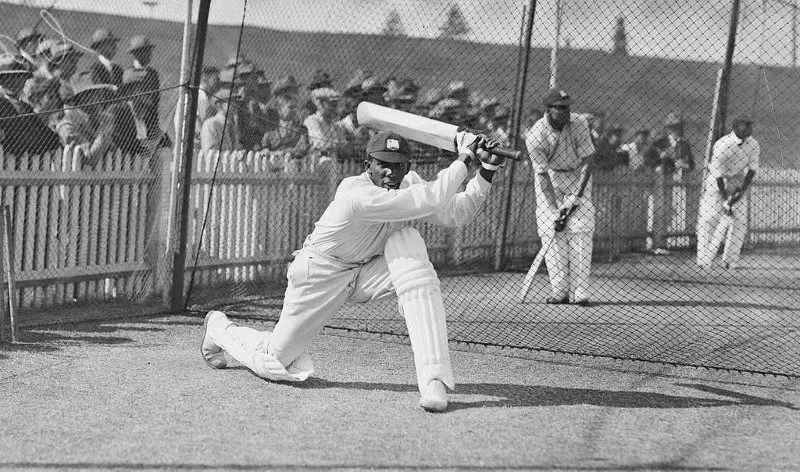
Ian Bishop
He’s now known across the world for his measured commentary, but Ian Bishop was previously one of the most fearsome bowlers in world cricket. Sadly, injuries disrupted his career, but he still finished with 161 wickets in just 41 test matches.
Stress fractures had an effect on his pace, but he was one of the best and among the fastest for a brief time. Bishop was effective on pacy wickets all around the world and his best test figures of 6/40 came on the fast and bouncy surfaces of Perth.
Garry Sobers
He’ll be remembered as one of cricket’s greatest all rounders but we shouldn’t forget how good Garry Sobers was with ball in hand. He was a left armer and wasn’t quite as quick as many of his contemporaries, but he had good speed plus a helpful amount of swing and seam.
Sobers claimed 235 wickets in 93 tests which put him high on the list of West Indies’ leading wicket takers of the time. He returned best figures in an innings of 6/73 and he also had a solitary wicket from just one ODI.
Young Fast Bowlers with the Most Potential
Jayden Seales
The future of fast bowling in the West Indies seems to be in good hands and Jayden Seales is one of the most promising youngsters around. He made his international debut as a teenager and has played fifteen tests and fifteen ODIs at the time of writing.
Seales is capable of high speeds and his best figures in a test innings to date come in at an impressive 6/61.
Nyeem Young
This is a name that might not be familiar to readers, but I think you’re going to hear a lot about Nyeem Young in the future. He’s been a star of the national team at the Under 19 World Cup and is looking to break into the national side very soon.
He can bowl at good pace but will also use seam and swing as chief weapons.
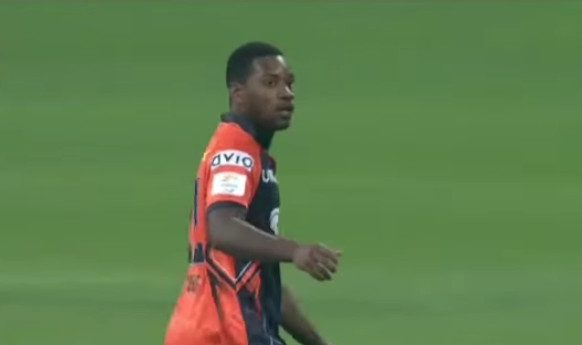
2024 Update: Up and Coming West Indian Fast Bowlers
It’s interesting to look back on this article that I first wrote in July 2022. Since in first appeared, Jayden Seales has been inconsistent and he’s been in and out of the international side. Nyeem Young, meanwhile, has yet to make his senior international debut.
While those youngsters struggle to make their mark, who are the best up and coming West Indian fast bowlers? One player who came from nowhere to announce himself on the international stage was Shamar Joseph. Few would have heard of him when I first wrote that article, but he became a West Indies hero on their tour of Australia in 2023/24.
After claiming five wickets in the Adelaide test, he took seven in an innings in Brisbane to fire West Indies to their first win in Australia in 27 years. Joseph wasn’t quite so successful on the West Indies tour of England the following summer, but his pace and his threat were obvious. In time, he could well become one of the West Indies great fast bowlers.
In that game, Joseph played alongside Kemar Roach who many will feel I should have included on the original list. At a time when West Indies fast bowling wasn’t at its best, Roach was a consistent and hostile figure. As of 2024, Roach has over 400 international victims across a long career.
For the younger crop of West Indian fast bowlers, consistency is the key. If they can find that elusive quality, West Indies cricket might yet get back to the top in all three formats.
Conclusion
Going through this list has brought back memories of a time when the West Indies dominated international cricket. They won the first two World Cups in 1975 and 1979 and their fast bowling units played a huge part in that success.
If you’re younger than me, I’d suggest checking out these names on YouTube. Each of them produced some devastating performances and there are many others who might have squeezed onto the list. Fast bowling is an art and it’s the West Indies who truly perfected it.

